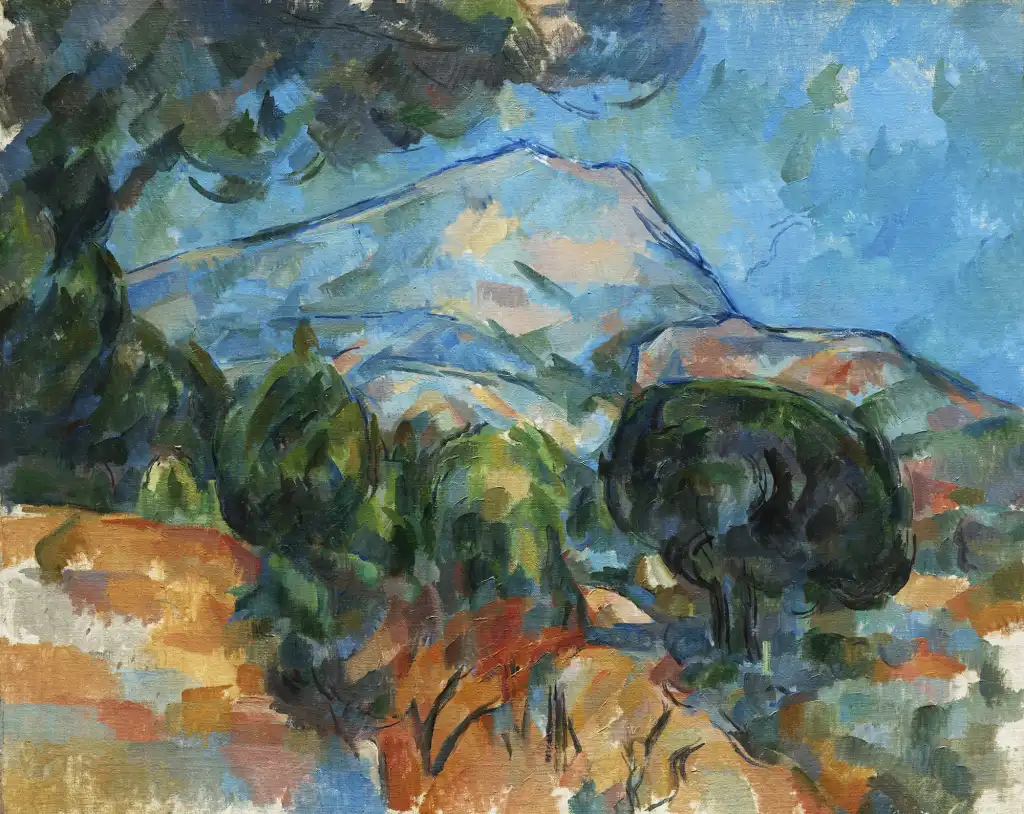Paul Cézanne’s series of paintings featuring Mount Sainte-Victoire, a limestone mountain overlooking Aix-en-Provence, stand as some of the most celebrated landscapes in art history. Among these, the version created around 1904 is particularly noteworthy, encapsulating the quintessence of Cézanne’s later work and his impact on the trajectory of modern art. This blog post will ascend the heights of Cézanne’s vision as manifested in this remarkable piece, exploring the facets that make “Mount Sainte-Victoire” a monumental work in the Cézanne canon.
A Mountain Carved in Memory and Canvas
Mount Sainte-Victoire was more than a mere subject for Cézanne; it was a muse and an obsession. He painted this Provençal peak numerous times, each rendition a testament to his evolving artistic philosophy. The circa 1904 painting is particularly telling of his mature style. It is not simply a landscape; it is a study of form, color, and light – a dialogue between the mountain and the man who continually sought to capture its essence.
The Geometry of Nature Revisited
In this painting, Cézanne continues his exploration of simplifying objects into their geometric fundamentals. The mountain is rendered through a series of color planes and subtle shifts in hue, creating a sense of mass and dimension that is almost architectural in its precision. This deconstruction of the visual world into basic shapes prefigured the Cubist movement, making Cézanne a vital bridge between Impressionism and the various strands of modernist art.
Color as Structure
Cézanne’s use of color in “Mount Sainte-Victoire” demonstrates his unique approach to building form. Rejecting the traditional method of delineating objects through line, he instead defines space and volume through patches of color. Warm tones push elements forward, while cooler shades recede, creating a dynamic interplay that brings the landscape to life. This innovative use of color to organize the composition was revolutionary, underpinning the work of future artists who would further dismantle and reconfigure the conventions of pictorial representation.
The Brushstrokes of Time
Each brushstroke in “Mount Sainte-Victoire” carries the weight of Cézanne’s contemplation. The application of paint is varied—dense in some areas, delicate in others—mirroring the diverse textures of the natural world. The visible brushwork adds a rhythmic quality to the scene, infusing the static image with a sense of the passage of time and the artist’s own hand.
A Legacy Set in Stone
“Mount Sainte-Victoire” is not only a high point in Cézanne’s artistic journey but also a beacon for the generations of artists who followed. It stands as a proclamation of the artist’s belief that art should treat nature “by means of the cylinder, the sphere, and the cone.” The painting’s influence is monumental, impacting artists from Pablo Picasso to Georgia O’Keeffe, who all found inspiration in Cézanne’s treatment of the natural world.
Conclusion: A View from the Summit
Paul Cézanne’s “Mount Sainte-Victoire” remains a powerful illustration of the artist’s commitment to his craft and his enduring influence on the evolution of modern art. The mountain, constant in its presence, reflects the artist’s unyielding quest to comprehend and convey his vision of the world—a world that he deconstructed and reconstructed on his canvas, laying the groundwork for the abstract landscapes of the future.
As we revisit Cézanne’s “Mount Sainte-Victoire,” we are invited to view not just the Provençal landscape he so loved but also the landscape of art itself, forever changed by Cézanne’s pioneering hand. Each stroke, each color, each form coalesces into a work that is as much a portrayal of a beloved mountain as it is a milestone on the path of artistic discovery.


Leave a Reply